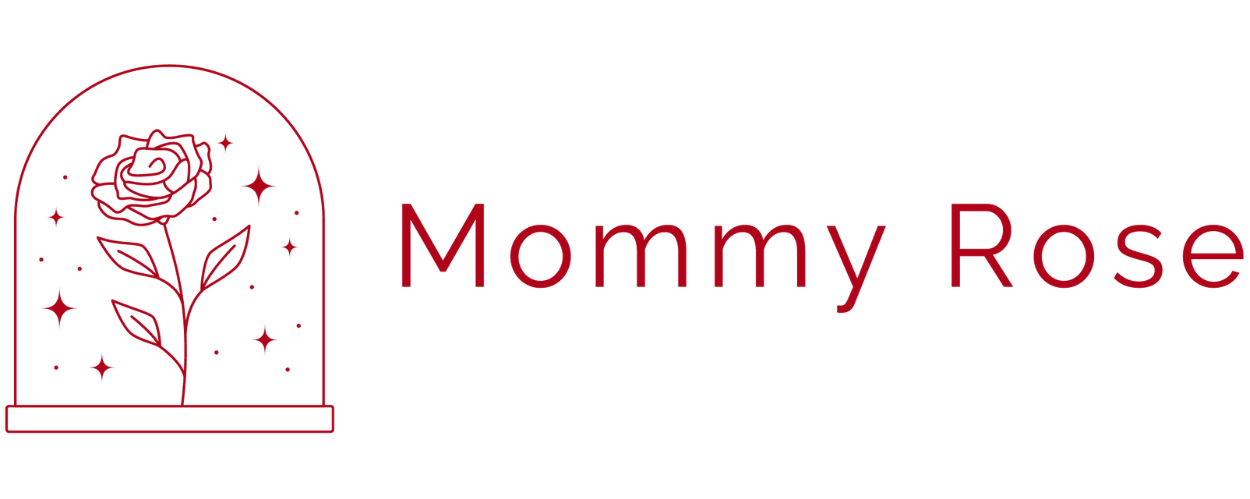Moms with Migraines – How I Manage My Chronic Migraines


I’ve had severe migraines my entire adult life, and sadly they’ve only gotten more intense and frequent over the years. Us moms are everyday super heroes, constantly juggling multiple responsibilities and caring for others. However, behind the scenes, many of us battle the silent enemy of chronic pain from migraines.
Migraines are not just headaches; they’re debilitating neurological conditions that can significantly impact daily life. Imagine trying to navigate the demands of motherhood while grappling with intense pain, nausea, and sensitivity to light and sound. For many moms with migraines, this is a weekly reality. Migraines don’t discriminate based on age, gender, or lifestyle. They can strike at any moment, leaving us moms feeling helpless and overwhelmed.
One of the most challenging aspects of migraines is their unpredictability. A migraine attack can derail plans, forcing moms to cancel commitments, miss out on important moments with their children, or retreat to a dark room until the pain subsides. This unpredictability can lead to feelings of guilt, frustration, and isolation.
The Ripple Effect of Migraines on the Family
Migraines don’t just affect the person experiencing them; they can also have a significant impact on the entire family dynamic. Children may struggle to understand why Mommy needs to lie down or why she can’t attend their school events. Partners may feel helpless watching their loved one suffer and may need to take on extra responsibilities around the house.
For moms, the pressure to continue functioning despite the pain can be immense. There’s often a sense of guilt for not being able to be fully present for their children or partner. This guilt can take a toll on mental health and exacerbate the symptoms of migraines.
In this guide, I will tell you how I manage my migraines with lifestyle choices along with medications. Sometimes listening to another person’s strategies can help you find solutions for yourself. They say misery loves company, but more importantly, there may be helpful clues to relieving your own struggles when hearing how others cope with their migraines.
*Note – This is NOT a sponsored blog post, but I will share the names of real-life products and services that I use for my treatment plans. They may be helpful for others to know.
Learning What Your Migraine Triggers Are, and Figuring Out How to Avoid Them
Understanding and identifying migraine triggers is a crucial step in managing this debilitating condition. By pinpointing triggers, whether they’re related to stress, diet, sleep patterns, or environmental factors, moms can take proactive measures to reduce the frequency and severity of migraine attacks.
This might involve keeping a detailed migraine diary to track potential triggers and patterns, undergoing allergy testing, tracking your menstrual cycle, or experimenting with lifestyle changes.
While the process of uncovering triggers can be challenging, the knowledge gained empowers moms to make informed decisions about their health and well-being, ultimately enabling them to reclaim control over their lives despite the unpredictability of migraines.
Some of the Most Common Migraine Triggers for Women
For many women, understanding their migraine triggers is a vital aspect of managing this complex condition. While triggers can vary from person to person, certain factors commonly contribute to migraine attacks in women.
Here are some of the most common migraine triggers that women may encounter:
- Hormonal Changes: Fluctuations in estrogen levels, such as those that occur during menstruation, pregnancy, or menopause, can trigger migraines in many women. For some, migraines may occur just before or during menstruation, known as menstrual migraines.
- Stress: Emotional stress, anxiety, and tension are well-known triggers for migraines. The demands of balancing work, family, and other responsibilities can exacerbate stress levels, increasing the likelihood of migraine attacks.
- Certain Foods and Drinks: Some women find that specific foods and drinks can trigger migraines. Common culprits include aged cheeses, chocolate, caffeine, alcohol (especially red wine), processed meats, and foods containing monosodium glutamate (MSG).
- Environmental Factors: Sensitivity to certain environmental stimuli, such as bright lights, strong odors (perfumes, smoke), loud noises, and changes in weather or barometric pressure, can trigger migraines in susceptible individuals.
- Sleep Disruptions: Irregular sleep patterns, insufficient sleep, or changes in sleep routines can trigger migraines in women. Both too much and too little sleep can be problematic for migraineurs.
- Physical Factors: Intense physical exertion, such as strenuous exercise or sexual activity, can trigger migraines in some women. Poor posture, muscle tension, and physical fatigue may also contribute to migraine onset.
- Medications: Certain medications, including hormonal contraceptives, hormone replacement therapy, and vasodilators, may trigger migraines in women. It’s essential to discuss any potential side effects with a healthcare provider when starting a new medication regimen.
- Skipping Meals: Irregular eating patterns or skipping meals can lead to fluctuations in blood sugar levels, which may trigger migraines in some women. Maintaining regular meal times and staying hydrated can help prevent this trigger.
- Hormonal Contraceptives: While hormonal contraceptives can be beneficial for some women in managing menstrual migraines, they may also trigger migraines in others. It’s essential to discuss contraceptive options with a healthcare provider to find the most suitable option.
- Hidden Dehydration – You may think that you’re drinking enough water, but there could actually still be a deficiency in electrolytes, and specifically magnesium and potassium. When I started drinking LMNT electrolyte packets on a regular basis, I saw a big decrease in lingering headaches that would persist throughout the day.
- Seasonal Allergies – During the months of March, April and May, I always see an uptick in headaches because my nasal cavities and sinuses get inflamed. Sometimes I don’t have all the classic symptoms of allergies (like runny nose, sneezing, itchy eyes, etc.), so it may not be immediately obvious that it’s causing headache pain.
Understanding and avoiding these common migraine triggers can empower women to take control of their condition and reduce the frequency and severity of migraine attacks. Keeping a migraine diary, practicing stress-management techniques, maintaining a healthy lifestyle, and working closely with healthcare providers can all play a crucial role in managing migraines effectively.
Finding a Medication Regiment to Help with Your Migraines
For some people, they can use over the counter pain medications like Excedrin to manage their head pain and it works well enough. But for others, a prescription is also needed. It personally took me many years before I was willing to look into medications prescribed by a neurologist. I don’t know exactly why I was so opposed to it, maybe I saw it as a sign of weakness or I felt that I would be judged by others. But eventually I reached a breaking point where I needed to pursue additional avenues to dealing with the pain from migraines.
Migraine Preventative Medication vs. Acute Medications
When it comes to managing migraines, understanding the difference between preventative medication and acute medications is crucial. Preventative medications are taken regularly to reduce the frequency and severity of migraine attacks over time. These medications may include beta-blockers, antidepressants, anti-seizure medications, and certain blood pressure drugs.
On the other hand, acute medications are taken at the onset of a migraine attack to alleviate symptoms and shorten its duration. These medications include over-the-counter pain relievers like ibuprofen and acetaminophen, as well as prescription drugs such as triptans and ergotamines. By working with healthcare providers to develop a comprehensive treatment plan that incorporates both preventative and acute medications, migraine sufferers can better manage their condition and improve their quality of life.
Adjusting Medications As Needed Until You Find the Right Combination
Adjusting medications until finding the right combination is a common aspect of managing migraines effectively. Migraine treatment is highly individualized, and what works for one person may not work for another. Doctors often start with a conservative approach, prescribing medications based on the frequency and severity of migraine attacks, as well as individual health factors. However, if initial treatments prove ineffective or cause intolerable side effects, adjustments may be necessary.
The process of finding the right combination of medications can require patience and persistence. Doctors may need to titrate dosages, switch medications, or explore alternative treatments until finding an approach that provides adequate relief with minimal side effects. It’s essential for patients to communicate openly with their healthcare providers about their experiences, including any changes in symptoms or medication tolerability.
In addition to medications, lifestyle modifications, such as stress management techniques, regular exercise, adequate sleep, and dietary changes, can play a significant role in migraine management. Combining medication with lifestyle adjustments may enhance treatment efficacy and reduce the overall burden of migraines.
Ultimately, finding the right combination of medications is about working collaboratively with healthcare providers to tailor a treatment plan to meet the individual needs and preferences of each patient. With perseverance and the support of a knowledgeable medical team, many migraine sufferers can find relief and regain control over their lives.
A Note on Opioids for Migraine Pain Management
Migraines are more than just headaches; they’re debilitating episodes of intense pain often accompanied by other symptoms such as nausea, sensitivity to light and sound, and visual disturbances. For those who suffer from chronic migraines, finding effective pain management strategies is essential for maintaining quality of life. Among the myriad of treatment options available, opioids have historically been considered as a last resort due to their potential for addiction and other adverse effects. However, their role in migraine pain management warrants careful consideration and understanding.
Many years ago, doctors would possibly send you home from the hospital with a small bottle of oxycodone and hydrocodone after a severe migraine episode. In the wake of the opioid crisis, it is very unlikely that you will ever get a subscription to any kind of medication that has a risk of addiction or abuse.
This really drives home the message that preventative measures are your best bet to keep migraines from wrecking havoc on your life. You can’t just rely on heavy duty pain meds to come to the rescue after the fact.


The Importance of Seeing a Migraine Specialist Doctor
When you make an appointment to see a general practice doctor about migraines, odds are that they won’t really know to develop a treatment plan for you. Migraines are a very specific and finicky type of medical condition, and it takes an expert to really get into the weeds with you. Neurologists are generally the specialist type of doctor who deals with migraines, but not even all neurologists are considered experts in migraines.
Unfortunately with the current landscape of medical insurance coverage in the United States, there can be a lot of obstacles and red tape when it comes to making appointments with specialists. Getting access to doctors who can really help can be very frustrating.
A few years ago I was introduced to Cove, a migraine-specific telemedicine company that gives you direct access to migraine specialist doctors who can prescribe medications. My husband had switched jobs and our health insurance coverage abruptly changed. During this transition I lost access to my migraine specialist doctor, which made it very difficult for me to get my migraine medicine prescriptions refilled. I take nortriptyline daily to prevent the frequency of migraines, and then rizatriptan to reduce the severity when a migraine does happen. An unplanned stop to this medication regiment can really negatively affect your mental health and bring on an avalanche of head pain. Cove takes a lot of different PTO insurance plans, so I highly suggest you give it a try.
Alternative and Unconventional Treatments for Migraines
Alternative and unconventional treatments for migraines offer hope to moms seeking relief beyond traditional medication approaches. While not always backed by extensive scientific research, many find these methods beneficial in managing their migraine symptoms.
Here are some alternative and unconventional treatments worth exploring:
Acupuncture: This ancient Chinese therapy involves the insertion of thin needles into specific points on the body to alleviate pain and promote healing. Some studies suggest that acupuncture may help reduce the frequency and severity of migraines for some individuals.
Cupping Therapy: The theory behind using cupping for migraine pain revolves around the idea of improving blood flow and relieving muscle tension in the neck and shoulders, areas commonly associated with migraine triggers. By increasing circulation and releasing tight muscles, cupping may help alleviate the intensity and frequency of migraine attacks for some individuals.
Herbal Supplements: Certain herbs and supplements, such as feverfew, butterbur, magnesium, and riboflavin (vitamin B2), have been studied for their potential to prevent migraines or reduce their intensity. However, it’s essential to consult with a healthcare provider before adding supplements to your regimen, as they may interact with other medications or have side effects.
Biofeedback: Biofeedback techniques teach individuals how to control physiological responses, such as muscle tension and heart rate, using electronic monitoring devices. By learning to recognize and modify these responses, some migraine sufferers report a reduction in the frequency and severity of their attacks.
Mindfulness and Meditation: Practices like mindfulness-based stress reduction (MBSR) and meditation can help individuals manage stress and reduce migraine triggers. By promoting relaxation and fostering a greater awareness of bodily sensations, these practices may help prevent migraines or alleviate their symptoms.
Chiropractic Care: Some migraine sufferers find relief through chiropractic adjustments, which aim to realign the spine and improve nervous system function. While research on chiropractic care for migraines is limited, some individuals report a reduction in migraine frequency and intensity after treatment.
Essential Oils: Certain essential oils, such as lavender, peppermint, and eucalyptus, are believed to have pain-relieving and calming properties. Inhalation or topical application of these oils may provide temporary relief from migraine symptoms for some individuals.
Cognitive Behavioral Therapy (CBT): CBT is a type of psychotherapy that helps individuals identify and change negative thought patterns and behaviors. By addressing underlying psychological factors such as stress, anxiety, and depression, CBT may help reduce migraine frequency and severity.
Ketogenic Diet: Some migraine sufferers report improvements in their symptoms after adopting a ketogenic diet, which is high in fat, moderate in protein, and low in carbohydrates. While more research is needed, some studies suggest that the ketogenic diet may help reduce migraine frequency and severity in certain individuals.
Gluten-Free Diet: My sister also suffers from migraines and she swears that being on a gluten-free diet helps her tremendously. She most likely has gluten sensitivity, a condition characterized by adverse reactions to gluten-containing foods without meeting the criteria for celiac disease. Symptoms of gluten sensitivity can vary widely and may include headaches or migraines in some cases. By eliminating gluten from their diet, these individuals may experience a reduction in migraine frequency and severity.
In conclusion, managing chronic migraines as a mom can be a daunting challenge, but it’s not insurmountable. Through my journey with migraine management, I’ve learned the importance of self-care, seeking support from migraine-specific healthcare providers, and advocating for my needs.
By prioritizing self-care practices such as adequate sleep, stress management, and staying hydrated, I’ve been able to better cope with migraine attacks and reduce their impact on my daily life.
While there’s no one-size-fits-all solution, finding a personalized treatment plan that combines medication, lifestyle modifications, and alternative therapies has helped me regain a sense of control over my health and well-being. Through resilience, perseverance, and a proactive approach, moms with migraines can continue to thrive despite the challenges we face.



